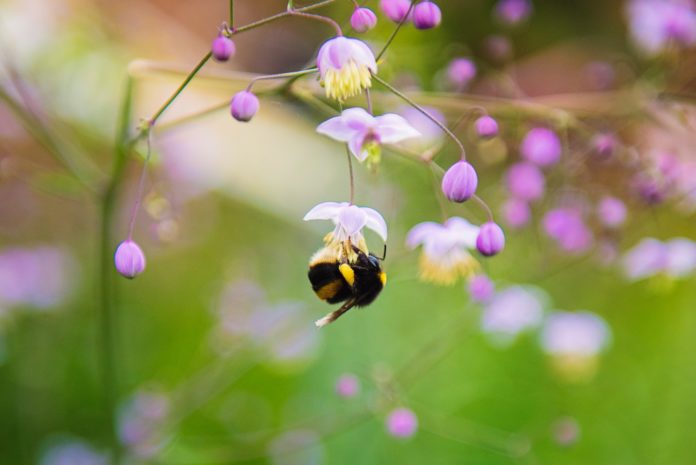Bumblebees play an essential role in food production, but urbanization is putting these pollinators at risk. According to a new study from York University, areas with high concentrations of concrete surfaces are particularly problematic — and if we want bumblebees to thrive, we need to be mindful of how we design our cities.
Amro Zayed, an associate professor of biology at York University, was corresponding author on the study published in Ecology and Evolution.
Cities aren’t friendly for bumblebees
Bees are responsible for one in every three bites of food we eat, but factors such as pesticides, parasites, and climate change are threatening these important species. And while a number of policy changes have been suggested to help combat these problems, the researchers behind the study were interested in learning how urban planning might offer additional solutions.
Big cities like Toronto, which was the focus of the study, are made up of a number of different landscapes. These include wide, concrete parking lots, dense regions filled with tall buildings, public parks and forests, and residential areas with personal lawns.
While some of these landscapes, such as forests, are ideal habitats for bumblebees, others aren’t as welcoming. Regions filled with roads, parking lots, and tall buildings offer few sources of pollen and force bees to travel further to find food.
To learn more about how bumblebees have adapted to different environments, the researchers behind the study divided the city using a square grid system, resulting in 270 distinct areas measuring two kilometres wide. They analyzed the areas for the landscape features and identified genetic signatures of the bee colonies in each one.
The researchers then collected samples from foraging bees in these different areas, and extracted DNA from the bees in the lab. This allowed them to link bees back to their home colonies.
“We used genetic techniques to fingerprint bumblebee workers and group them into families and nests,” explained Zayed in a press release.
“[We] then used triangulation […] to determine where each nest is within Toronto, and how far worker bees had to go from their nest to forage for food.”
A short travel distance is important, because bumblebees expend a great deal of energy while foraging for food. Greater foraging distances therefore lead to negative impacts on the bees’ health.
Unsurprisingly, the team found that areas with a high density of buildings, roads, paved surfaces, and humans made for the worst bumblebee habitats. Bee colonies in these areas contained fewer bees, and the bees themselves travelled greater distances to find food.
Green spaces, on the other hand, were associated with larger bee colonies and shorter foraging distances.
Not all green spaces are created equal
The team went on to investigate how different green spaces in Toronto might be better or worse for bumblebees. Residential areas, for example, are likely to have a different layout and diversity of plant species compared to forests or parks.
They found that functional green spaces, such as forests, parks, and meadows, provided better habitats for bees than purely aesthetic green spaces, such as lawns. Bees in these spaces had shorter distances to travel when foraging for food sources.
Zayed and co-authors see this as an opportunity for both homeowners and urban planners. Prioritizing plants and green spaces that offer better habitats for bumblebees can help these species in the long run.
While the City of Toronto previously had bylaws in place to prevent homeowners from creating these sorts of green spaces, these bylaws have been revised in the past few years. This was largely thanks to the efforts of designer Nina-Marie Lister, who fought for the right to cultivate a natural, pollinator-friendly garden on her property.
One way that we can support bumblebees in our cities is following Lister’s example of allowing natural gardens to thrive. We can also focus on filling our gardens with native, bee-friendly plant species.
“By converting boring green spaces, such as grass lawns, into functional green spaces like meadows and pollinator gardens, city dwellers can provide ideal bee habitats,” Zayed concluded.








































